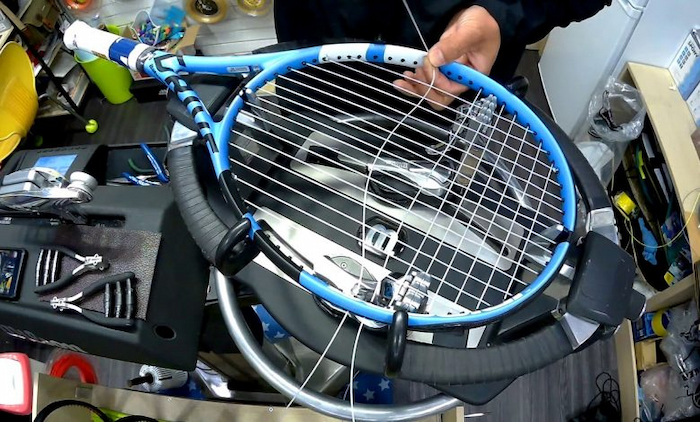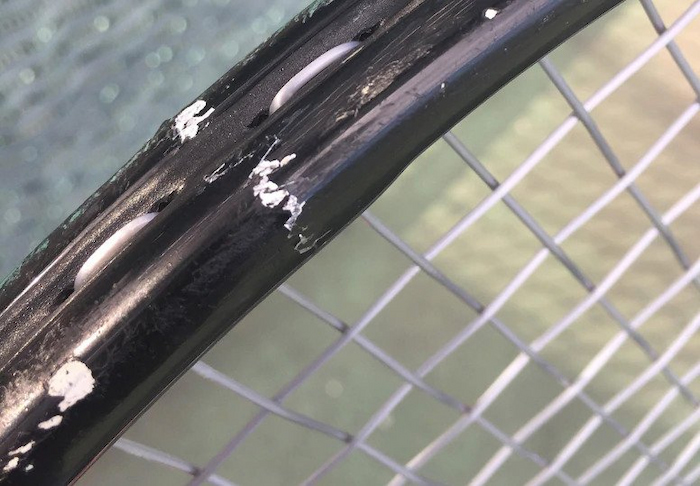Playing tennis is a joy, and there’s little more frustrating than running into issues with your tennis racquet that messes with your game. There are so many different types of racquets out there, each with its advantages and disadvantages. Particularly if you’ve been playing for a while, odds are you’ve run into some sort of issue with your existing racquet.
Racquets are the essential tools of any tennis player. So it goes without saying, that your racquet should be in perfect working condition at all times. But in case you haven’t noticed, that isn’t always the case. If you’re like most tennis players, you’ll experience a racquet problem every few months. The good news is that most issues are easy to fix as long as you know exactly what you’re looking for.
Here’s a guide on how to identify and resolve racquet issues.
Let’s Talk About String Tension

As you may know, every type of tennis string has a range of tension that it performs best at. Tennis string tension also affects how much your tennis racquet weighs.
High string tensions provide greater power, control and durability of your strings. The higher the tension, the more force is applied to the racquet and strings. As a result, the ball will have more speed, spin and control at impact. However, high string tension can be harder on your arm and may even lead to tennis elbow.
On the other hand, low string tensions provide greater comfort to your arm and elbow. In addition, you will get an increase in pop on the ball with less effort needed to execute shots such as topspin and slice. However, low string tension provides less control at impact which could lead to poor shot placement.
It’s important to note that all racquets are different and may need different string tensions. That said, it’s of best recommendation to update your gear with high-quality tennis racquet strings every couple of months to make sure you have a good starting point at adjusting your string tension to your needs. Various brands can carry tennis racquet strings, so it’s best to research for a bit before buying or consult a professional in order to choose the best one from the wide selection.
Check the Grip Size and Condition
The grips on tennis racquets are important. They make or break the play of a player. The materials used in the grips can have a big impact on durability.
One of the most common grip materials is leather, which is fairly durable and will stand up to regular use. But if you’re looking for a racquet with high durability and longevity, you may want to consider synthetic grip material. If you’re going for a racquet that’s going to last for years, synthetic grip helps ensure that it’ll hold up well over time.
Grip size matters as well. You want a racquet string that can give you as much “kick” as possible, which is why you should be using the proper size in your racquets. Finding a grip size that fits your hand is crucial because it can make a huge difference in how comfortable you are while playing. The extra length on an oversized racquet can make it feel awkward in your hand. A smaller grip can be more comfortable and easier to play with.
Shifting Balance Issues
Different players need different things from their racquets. Novices may prefer more head-heavy (or top-heavy) racquets, which help generate power on sloppy swings and keep the racquet in play when they hit off centre. Advanced players tend to favour a more balanced or head-light design, which provides better control on shots.
It all comes down to leveraging physics and inertia to your advantage. The most common way to shift the balance point of a racquet is by adding weight to the butt cap or handle. This means that the weights have to be placed as far from the centre of gravity as possible, so they have maximum leverage over the distribution of mass in the frame.
Even though the type of balance that you prefer depends largely on your playing style and what you’re looking for from your racquet, there is one thing that all players can agree on: if your racquet is not balanced properly, it will negatively affect your performance on the court.
What to Do If The Frame Is Bent

After playing tennis for a while, you’ll notice that racquets can go through plenty of abuse. Over time, sometimes when going over the net or hitting different surfaces, the racquet will start to bend. So, if you don’t want to spend money on a new racket, there are tools you can use to straighten the frame without damaging it.
Here are some of the best ways to fix a bent frame:
- Using a hammer and a flat piece of wood, gently knock out the damaged area. This might take multiple hits depending on the extent of the damage.
- Using a hammer and nail, pry out both sides of the frame where it’s bent out. You may have to do this multiple times depending on the extent of the damage.
- Using pliers or other tools with enough grip and leverage, try pulling one side back in its original position. You may have to do this multiple times until your racquet fits back into place properly.
To Sum Up
Whether you brandish a low-end club, a pro-level stick or one somewhere in between, tennis racket issues are an irksome plague that each player must face from time to time. While there’s no way of knowing just how smoothly your next match will go, there are a few steps you can take to minimize the risk of your racket becoming an issue for you. Nonetheless, it’s better to be prepared and less frustrated next time your stick becomes the problem to be solved.












